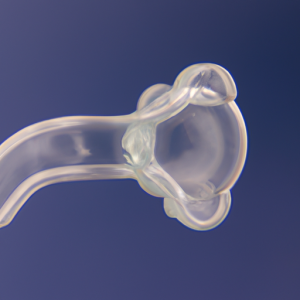The prostate gland is an integral part of the male reproductive system, playing a crucial role in the production of seminal fluid. However, like any other organ in the body, it is susceptible to various conditions and disorders. In this comprehensive guide, we will delve into the world of prostate devices, exploring their diagnosis, treatment, symptoms, and causes. From understanding the intricacies of prostate issues to innovative solutions for their management, this article aims to provide a comprehensive understanding of prostate device and its impact on men’s health. Whether you are seeking information for yourself or a loved one, this guide will equip you with the knowledge necessary to navigate through the complexities of prostate health. So, let’s embark on this journey to unravel the mysteries surrounding the prostate gland and its associated conditions.
1. Understanding Prostate Device: A Comprehensive Guide to Diagnosis, Treatment, and Symptoms
The prostate is a small gland located just below the bladder in men. It plays a crucial role in reproductive health by producing fluid that nourishes and protects sperm. While it is normal for the prostate to grow with age, certain conditions can cause it to become enlarged or inflamed, leading to various symptoms and potential health complications. In this comprehensive guide, we will explore the diagnosis, treatment, and symptoms associated with prostate disorders.
1.1 Diagnosis:
Diagnosing prostate-related issues typically involves a series of tests and examinations. The initial step is usually a comprehensive medical history review and a physical examination, including a digital rectal exam (DRE). During a DRE, a healthcare professional inserts a gloved, lubricated finger into the rectum to feel the prostate for abnormalities like enlargement or lumps.
Additionally, a blood test called the prostate-specific antigen (PSA) test is commonly conducted to measure the levels of PSA, a protein produced by the prostate. Elevated PSA levels can indicate potential prostate problems, although further investigation is required to confirm a diagnosis.
In some cases, imaging tests such as ultrasound, magnetic resonance imaging (MRI), or computed tomography (CT) scans may be recommended to obtain a clearer picture of the prostate and detect any abnormalities or tumors.
1.2 Symptoms:
Prostate disorders can manifest through a range of symptoms, although not all individuals may experience noticeable signs. Some common symptoms include:
1.2.1 Urinary problems:
– Increased frequency of urination, particularly during the night (nocturia)
– Difficulty starting or stopping urination
– Weak urine flow or dribbling
– Inability to empty the bladder completely
– Blood in urine or semen
1.2.2 Sexual dysfunction:
– Erectile dysfunction or difficulty achieving and maintaining an erection
– Painful ejaculation
– Decreased libido
1
2. Exploring the Causes and Risk Factors of Prostate Issues: A Closer Look at Prostate Device
The prostate is a small gland located below the bladder in men, responsible for producing seminal fluid. Unfortunately, it is also susceptible to various issues that can cause discomfort and affect overall health. Understanding the causes and risk factors associated with prostate issues is crucial in managing and treating these conditions effectively. In recent years, the development of advanced medical technology has led to the introduction of innovative prostate devices that aid in the diagnosis and treatment of prostate-related problems.
One of the primary causes of prostate issues is age. As men grow older, the risk of developing prostate problems increases significantly. Conditions such as benign prostatic hyperplasia (BPH) and prostate cancer commonly affect older men. BPH, also known as an enlarged prostate, occurs when the prostate gland grows in size and obstructs the flow of urine. Prostate cancer, on the other hand, is the abnormal growth of cells in the prostate and can be life-threatening if not detected and treated early.
Hormonal imbalances are another contributing factor to prostate issues. Testosterone, the male hormone, plays a crucial role in prostate health. However, an imbalance in testosterone levels can lead to the development of various prostate conditions. High levels of testosterone, for instance, can increase the chances of prostate cancer, whereas low levels can contribute to BPH. Hormonal imbalances can occur due to aging, certain medications, or underlying health conditions.
Genetics also play a significant role in prostate health. Research suggests that individuals with a family history of prostate problems are more likely to develop similar issues themselves. Genetic factors can influence the growth and function of the prostate gland, making some individuals more susceptible to prostate conditions than others.
Lifestyle choices and environmental factors are additional contributors to prostate issues. Poor diet, lack of exercise, smoking, and excessive alcohol consumption have been linked to an increased risk of developing prostate problems. Additionally
3. Prostate Device: Innovative Solutions for Diagnosis, Treatment, and Management of Prostate Conditions
The field of prostate health has witnessed significant advancements in recent years, particularly in the area of innovative solutions for the diagnosis, treatment, and management of prostate conditions. With the emergence of prostate devices, healthcare professionals now have access to cutting-edge tools that aid in the accurate detection, effective treatment, and comprehensive management of various prostate-related issues.
One of the most crucial aspects of prostate health is the early and accurate diagnosis of conditions such as prostate cancer, prostatitis, and benign prostatic hyperplasia (BPH). Prostate devices play a pivotal role in this regard by enabling healthcare providers to conduct precise diagnostic tests. These devices include state-of-the-art imaging tools like transrectal ultrasound (TRUS) and magnetic resonance imaging (MRI), which provide detailed images of the prostate gland, facilitating the identification of abnormalities or tumors. Additionally, the advent of biomarker testing, such as the Prostate-Specific Antigen (PSA) test, has revolutionized prostate cancer detection, allowing for earlier intervention and improved outcomes.
When it comes to treatment, prostate devices offer a range of innovative solutions that have transformed the landscape of prostate care. For instance, minimally invasive procedures such as laser ablation and radiofrequency ablation, performed using devices like the GreenLight™ Laser Therapy system, have gained popularity for the treatment of BPH. These techniques provide a safe and efficient alternative to traditional surgical methods, offering patients reduced recovery times and fewer complications.
Another remarkable development in the field of prostate devices is the introduction of robotic-assisted surgery. Robotic systems, such as the da Vinci Surgical System, have revolutionized the surgical approach to prostate conditions, particularly prostate cancer. These devices enable surgeons to perform highly precise, minimally invasive procedures, resulting in reduced pain, faster recovery, and improved oncological outcomes. The use of robotic-assisted surgery has significantly transformed

